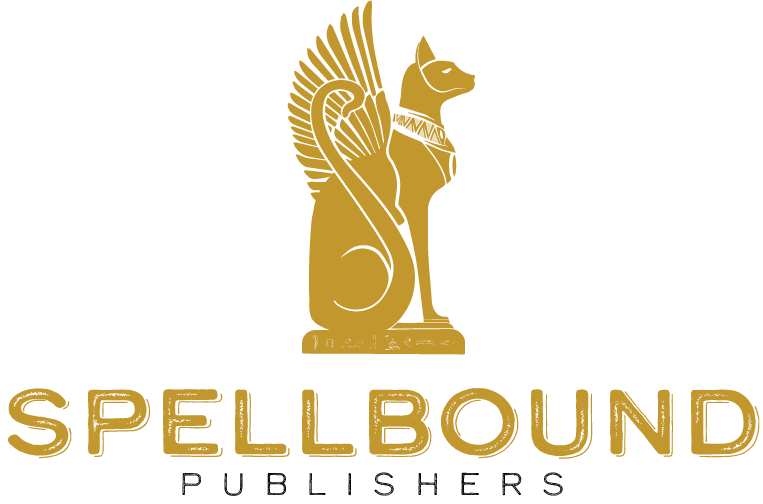Blog
Audio Books: What Are My Options
Are people really listening?
Yes! Over $1.2 billion audio books are sold every year according to the Audio Publishers Association (APA). Since the number of audio books listened to per year continues to increase—this is a section of the market you don’t want to miss.
Why Audio?
Nothing brings a story to life like hearing it told out loud. Whether listening in their car or at home, listeners report enjoying the sense of connection with the story, preferring a professional narrator over author-read titles.
Do I have to have a published book to have an audio book?
Nope. We can work with your edited manuscript to create a stand alone audio book as a product to sell through various distribution points like audible.
What are my Options?
In the audio world—it is...
moreHow to Use Quotes in Your Book
Using quotes to break up content or provide inspiration is a great idea! Here's how you can use quotes legally in your work, and what to avoid...
You DO need permission to use:
- Song lyrics or poems.
- Exception: If you’re quoting a song from before 1923 you don’t need permission. All works before then are in the public domain.
- Hymns that are in the public domain fall under fair use. Not ALL hymns are free to use, though, so be sure to check.
- Art and photography that is copyrighted.
- Quotes from famous people if used as a book title or more than a sentence or two.
- Quotes from "new" versions of the Bible published after 1923.
You DON’T need permission:
- To quote books or other works published before 1923
- To quote news stories
- To quote scientific studies
- Recipes (but to play it safe, please reference this article from attorney Sara F. Hawkins.)
- To quote scriptures from...
Decoding Publishing
It's an exciting time to be working in the publishing industry; there are more options for authors than ever before. So how do you know what publishing route (and company) is best for you?
There are two main routes to consider: traditional publishing, and indie publishing. There is not a one-size-fits-all model, and there are pros and cons to each of the two main routes. To determine which route is best for you:
- define your goals
- create your budget
- create a business plan for your book (including sales projections, your break-even analysis, and marketing plans)
- know your genre and audience
Option 1: Traditional Publishing
You will start this process by querying a literary agent. Here is a great query template for you! You can find literary agents by looking at the acknowledgment section in books that are comparable to the title you are pitching, or through industry...
moreWHAT ARE IMPRINTS?
There is not a one-size-fits-all approach to publishing. Each book or series you write has a unique audience with a specific purpose. Because of that, some of your books may sell better under the traditional publishing route, while others will reach more people by self-publishing and marketing to a small, niche audience. If you want to maintain your creative control, intellectual property, and rights to your work while generating extra income with a marketing approach you enjoy, you will want to consider publishing your books under your very own publishing imprint.
What is an imprint?
An imprint is a trade name that identifies a line of books within a publishing company. For example, Golden Books is an imprint within Random House. Spellbound is an imprint. Insert-your-name-here-Press, can be an imprint! Having your own imprint gives you the ability to publish your own books under your own company, retain complete control of your royalties, and enjoy the freedom to do what you love—writing—all with the benefit of an...
moreTHREE WAYS TO FALL IN LOVE WITH MARKETING
Writing your book is a major accomplishment, but, as you know, the work doesn’t stop there. Too often we see authors who have published a polished manuscript with a beautiful cover at the right price point—and no one to read it. As a publisher, it’s heart-wrenching to watch a new author finish their book, have a successful launch, and then low to no sales. Whether you are traditionally published, or self-published, you need to treat your book like a business. That means you need to create a marketing plan for your book business to thrive. How can you get more book sales and have fun doing it? Spend time falling in love with marketing with these three tips:
1 - Preparation is key.
You know the old (D)adage: If you fail to plan, then you plan to fail. This is true for your book business too. What are some of your marketing plans for your book?
Your Inspiration: “Give me six hours to chop down a tree and I will spend the first four sharpening the ax.” ― Abe Lincoln
Your mantra: I easily overcome my fears around digital...
CONTENT SEQUENCE
There are several pieces of your book: the foreword, the acknowledgments, the about the author page, and so on. But how do you know what order to put these in? Each publisher and author’s team will have their own preferences and standards. Below is a typical flow of content you can use or modify. You do not need to use all of the pieces listed.
Front Matter
- Title page 1 - include book title only, in the same font used on the cover
- Title page 2 - include book title, author, and publishing imprint
- Copyright page - include your PCN, ISBN, and copyright info here
- Praise for (insert book title) - optional - insert if you have some reviews
- Dedication - optional - 1-2 sentences
- Table of Contents - nonfiction only
- Acknowledgments - this is where the author thanks their book team in 1-2 pages
- Foreword - optional - this is about 1,000 words written by someone else offering credibility
- Preface - optional
- Introduction by the author - optional
- Prologue -...
BOOK MARKETING 101
Marketing your book can easily become a full-time job, but with the proper plan, you’ll be able to execute your launch efficiently and successfully.
1. Establish the connection: follow bookstores, colleagues, media outlets, and influencers on social media. Set up a spreadsheet with all of your marketing leads on various tabs. These are people you are going to reach out to and offer a free ebook, or connect with them on how they can interview/feature you during your launch week:
Podcasts - Set a goal of contacting 10/day. Be sure you have followed them on social media and been engaged in their online platforms (liking/sharing content) - that way they might recognize your name when you reach out.
Instagram - Find the 'bookstagrammers' that review books in your field and inquire about their affiliate programs to feature your book. Look up which hashtags people are using in your industry through all-hashtags.com / you can also use later.com to schedule...
THREE STEPS TO MARKETING YOUR BOOK
Marketing your book is critical to getting sales, so it’s important for authors to have an understanding of the process. Even when you're in the beginning stages of writing your book, you'll want to identify your audience demographic and get some traffic (attention) in order to ultimately sell books. Your publisher may have marketing programs available, but all authors can—and should—take every opportunity to help promote and sell their book. Below is a simple, three-step process that you can follow.
1. Know your audience.
A writing coach once told me to pick a certain person and write to him or her. Defining your audience through a singular “avatar” has its benefits:
Know what problem you are solving for your audience.
Clearly define your storyline.
Clearly define sales or speaking points.
Write your elevator pitch with your audience in mind.
Define your demographic.
Create a sales page that speaks to your audience and post it on your website with a link...
HOW TO WRITE A PRESS RELEASE
It’s an exciting time when you’re ready to launch your new book. From setting up signing events at bookstores, to emailing your newsletter list to let them know the big day has finally come, there are several things you can do to help market your book. One approach to spreading the word is to write a press release.
Before you write your press release, consider the audience. Are you sending this to the media to let them know about an interesting/entertaining launch party? Are you sending this to a network of bookstores and podcasters to announce your title is available and you’d like to speak on their platforms? Are you sending this to your newsletter mailing list that is more of a warm market? It’s always important to remember who you’re writing to and why, to help tailor your message.
The purpose of a press release is to promote something special and significant, such as your book release. In sending a press release to the media, you are hopeful they will feature you on a personal interest story or share your...
moreUNDERSTANDING THE BESTSELLER LIST
Getting on the bestseller list is every author’s dream, but how does it work? I’ve deconstructed the mystery behind getting a spot on the top three most sought after bestseller lists: The New York Times, The Wall Street Journal, and Amazon. First, you need to understand the two critical factors that create the perfect environment for a book to make it on a bestseller list: how sales get counted and which sales get counted.
Sales are recorded weekly, from Monday to Sunday. All sales during this seven-day period are added up and compared against other sales that week to determine who has sold the most, and therefore the ranking of the bestseller list. This is why your first week is so important to launching you on the list—and why all authors seeking bestselling placement should have a strong pre-order plan.
Unique sales matter—bulk sales do not count. You cannot simply have a friend order thousands of books on your launch date and hope to make it to the bestseller list. Also, the timing of sales has to do with when your...
moreWHY WORD COUNT COUNTS!
Recently, one of our favorite author-bloggers wrote a comprehensive post about word counts. You may not think word counts matter, or you may be unsure of your word count because you're still writing your book. But we encourage you to think of the bigger picture: your finished book. Depending on your genre, your final word count matters to your audience!
Readers in your genre have an expected book-length. If you go outside of the guidelines listed below, you are putting readers outside of their comfort zone, and they will have a tough time buying your book. Even self-published books must stay within a predictable word count range.
While you're outlining your book, think about your final word count. Consider where you want to be when you're mid-way through your writing. Plan out your word count for each chapter. For example, if you’re writing a mystery novel that is nine chapters, and then your word count should be roughly 90,000 words, and each chapter should be approximately 10,000 words. Halfway through the book, you...
moreTRIM SIZE
What is a trim size?
Trim size refers to the size of your book. Whether you are creating a paperback or hardback book, your book team will need to know what size cover files and interior files to produce. It’s important to establish your trim size early on, so everyone working on your project stays within the same guidelines.
At Spellbound, we offer three standard trim sizes: 5.5x8.5, 6x9, 8x8.
Avoid this mistake.
When I printed my first book, I chose a non-traditional size because I thought it was cute. When the book sold well (over 5k copies) and I wanted to move it from self-publishing to traditional publishing, we had to resize all of the files to fit what would work with my publisher’s printer. The lesson here is that if you want to leave the doors of opportunity open for your book to potentially move to a traditional publisher or print a large scale print run, you can pave the way for success by opting for a traditional trim...
moreUSING TWITTER IN YOUR MARKETING CAMPAIGN
Twitter is a great resource and social networking platform for authors to connect with readers, bookstores, and other writers. To create your account, you’ll need one unique email and a password. From there, you can upload a profile photo and a background image. If you need design help with these elements, our Design Team can assist.
Who to follow:
Once your account is set up, your first step is to follow other accounts. Connect with thought leaders in your field, relevant accounts to your topic, local media, bookstores, and others. Try to abstain from using your author account too widely; you want to come across as a professional with tweets that are relevant to your topic.
Building lists:
You can create a “list” within your Twitter account. Other people can subscribe to these lists. You might want to add a list for your favorite authors, bookstores, and thought leaders in your topic. You can easily click on these lists to see only the tweets from the accounts you have added to your list. This is an easy way...
moreTHE ONE THING YOUR BOOK NEEDS
When it comes to marketing, what makes one book sell more copies than others in its genre? Is the content most important? The cover design? An expensive public relations campaign? A hot social media account? Boosting posts? Getting big signing events?
If you want to sell more books, then having your book in the mainstream, large-scale bookstore distribution is the most significant difference between traditionally published and self-published authors. This is a priority to keep in mind when considering self-publishing companies. Most self-published authors do not have access to large bookstore distribution once their titles are released. This means you will need to make a plan, or hire a professional, to help get your books in bookstores, land signing events, and catch the public's attention.
It is vitally important to develop your marketing plan in mind early on in the writing process. Look for sound bites, bullet points, and sentences to extract for marketing your book while you are still writing and editing your...
more













